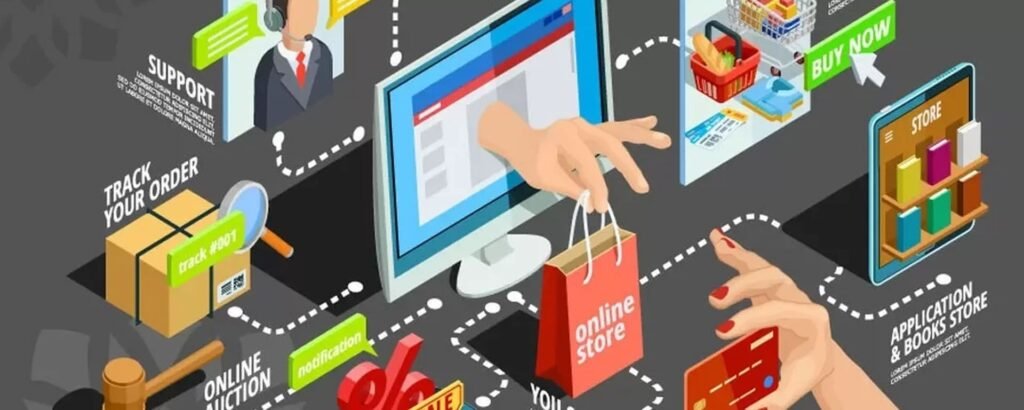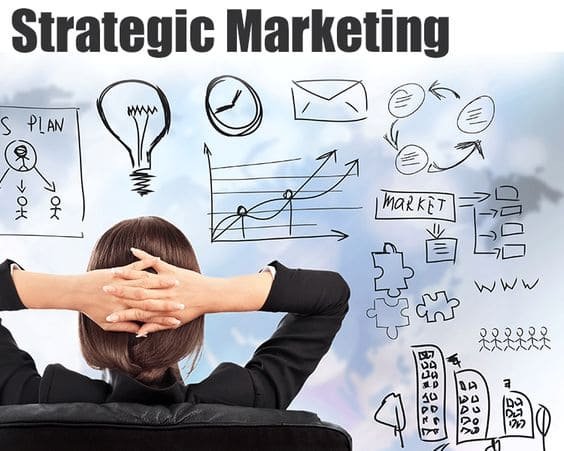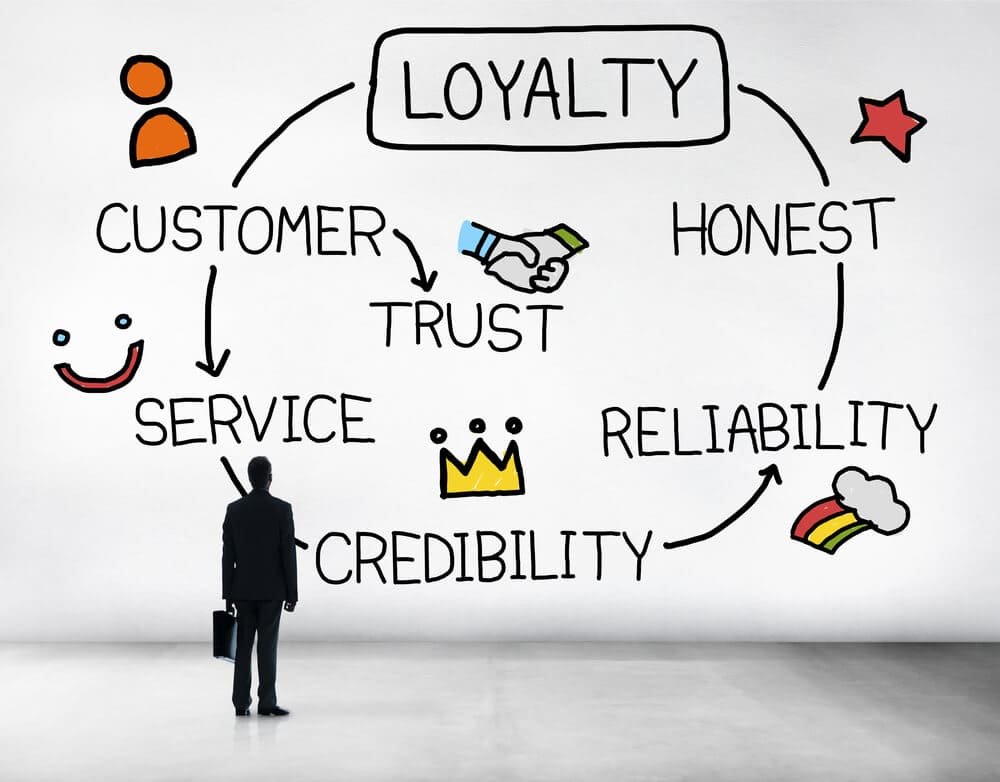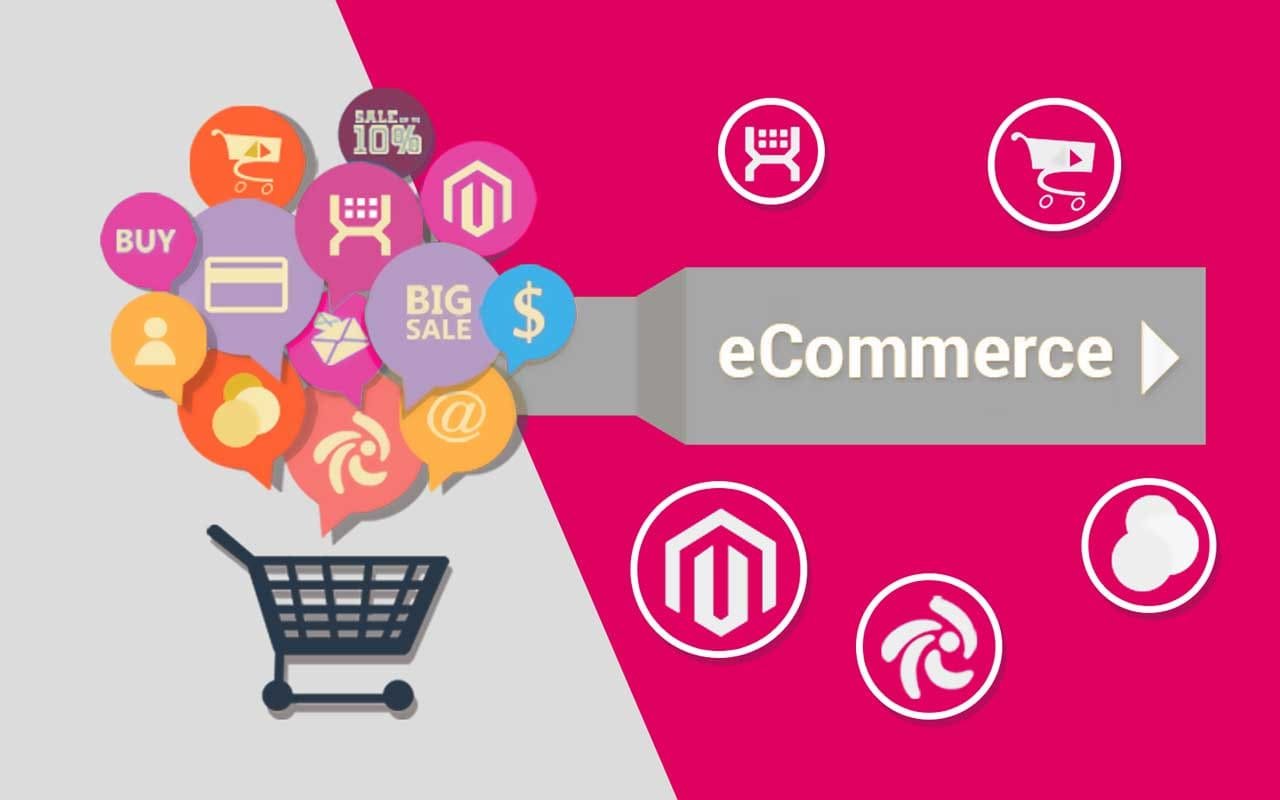Table of Contents
In the fast-paced realm of ecommerce, implementing effective strategies for ecommerce is crucial for maximizing sales and driving account growth. Businesses must adopt a multifaceted approach to successfully achieve these objectives. Firstly, prioritizing website design and user experience is essential, as it directly impacts conversion rates and encourages customer loyalty. Targeted marketing campaigns tailored to the ideal audience play a significant role in boosting sales. Investing in search engine optimization (SEO) is equally vital to enhance visibility and attract organic traffic to the website. Diversifying product offerings based on data-driven insights further amplifies sales potential and meets diverse customer needs. Additionally, offering promotions, discounts, and loyalty programs can incentivize purchases and foster long-term customer relationships.
Understanding the Ecommerce Landscape: Strategies for Ecommerce Success
Understanding the ecommerce optimization landscape is essential for businesses looking to thrive in the competitive online marketplace. Here’s an overview of key points to consider, along with strategies for ecommerce success:
- Market Dynamics: The ecommerce industry is experiencing rapid growth globally, driven by factors such as increasing internet penetration, changing consumer behavior, and advancements in technology.
- Competitive Environment: Businesses operating in the ecommerce space face intense competition from both established players and new entrants. Understanding competitors’ strategies and identifying unique selling propositions are crucial for success.
- Consumer Behavior: Consumer preferences and shopping habits are constantly evolving, with a growing emphasis on convenience, personalization, and seamless shopping experiences. Ecommerce businesses must adapt their strategies to meet these evolving demands.
- Technological Advancements: Technology plays a pivotal role in ecommerce, enabling businesses to enhance customer experiences, optimize operations, and drive innovation. Embracing emerging technologies like AI, AR, and blockchain can provide a competitive advantage.
- Regulatory Considerations: Ecommerce businesses must navigate a complex regulatory landscape encompassing areas such as data privacy, cybersecurity, taxation, and international trade regulations. Adherence to these regulations is crucial in order to avert legal complications and preserve consumer confidence.
- Logistics and Supply Chain: Efficient logistics and supply chain management are critical for ecommerce success, ensuring timely delivery, inventory management, and customer satisfaction.
- Customer Experience: Providing a seamless and personalized customer experience is paramount in ecommerce. Strategies such as website optimization, personalized recommendations, and responsive customer support can help enhance the overall shopping experience.
By understanding these key aspects of the ecommerce growth strategies landscape and implementing effective strategies, businesses can position themselves for success and capitalize on the opportunities presented by the growing online marketplace with ecommerce marketing tactics.

Setting the Foundation for Success
Setting a solid foundation is crucial for success in ecommerce, laying the groundwork for sustainable growth and profitability. Here are key points to consider when establishing your ecommerce business:
- Clear Goals and Objectives: Define specific, measurable goals for your ecommerce venture, such as revenue targets, customer acquisition goals, and market expansion objectives. Having clear goals will guide your strategy and keep your team focused.
- Market Research:To comprehend your target market, rivals, and industry trends, perform in-depth market research.Identify niche markets and opportunities for differentiation to carve out your unique value proposition.
- Choose the Right Platform: Selecting the appropriate ecommerce platform is essential for ensuring a seamless shopping experience for your customers. Consider factors such as scalability, customization options, and integration capabilities when choosing a platform.
- Technology Stack: Build a robust technology stack comprising ecommerce software, analytics tools, and marketing automation platforms. Leverage emerging technologies like AI and machine learning to optimize operations and enhance the customer experience.
- Budget Allocation: Allocate your budget strategically, focusing on areas that will yield the highest return on investment. Invest in marketing, product development, and customer service to drive sales and build brand loyalty.
- Team Building: Assemble a skilled team with expertise in ecommerce, marketing, and technology. Collaborate with partners, vendors, and agencies to complement your team’s skills and capabilities.
By setting a strong foundation based on clear goals, market research, technology, and team building, you can position your ecommerce business for long-term success and growth in the competitive online marketplace.

Optimizing Product Offerings
Optimizing product offerings is a crucial aspect of ecommerce strategy, influencing customer satisfaction, retention, and overall sales performance. Here are key strategies for effectively managing and enhancing your product offerings:
- Curating a Compelling Assortment: Select products that align with your target market’s preferences, needs, and purchasing behavior. Conduct market research to identify trending products, niche opportunities, and gaps in the market.
- Conducting Product Research and Analysis: Analyze sales data, customer feedback, and industry trends to identify top-performing products and opportunities for expansion. Monitor competitors’ product offerings to stay competitive and differentiate your offerings.
- Implementing Effective Pricing Strategies: Set competitive pricing based on factors such as product value, market demand, and competitor pricing. Utilize pricing tools and analytics to optimize pricing strategies and maximize profitability.
- Enhancing Product Descriptions and Visuals: Create compelling product descriptions that highlight key features, benefits, and unique selling points. Use high-quality images and videos to showcase products from different angles and provide an immersive shopping experience.
- Offering Product Bundles and Cross-Selling Opportunities: Create bundled product offerings to encourage upselling and increase average order value. Implement cross-selling techniques by recommending complementary products based on customer preferences and purchase history.
- Monitoring and Adjusting Product Performance: Continuously monitor product performance metrics such as sales volume, conversion rates, and customer reviews. Identify underperforming products and adjust pricing, marketing, or presentation to improve sales performance.
By implementing these strategies, ecommerce businesses can optimize their product offerings to meet customer needs, drive sales, and maximize profitability in the competitive online marketplace.

Enhancing User Experience
Enhancing user experience (UX) is crucial for ecommerce conversion optimization, as it directly impacts customer satisfaction, engagement, and ultimately, sales. Here are key strategies to improve UX in ecommerce:
- Intuitive Website Design: Design your ecommerce website with a clean layout, intuitive navigation, and clear calls-to-action (CTAs) to guide users seamlessly through the shopping process.
- Mobile Optimization: Optimize your website for mobile devices to accommodate the growing number of users shopping on smartphones and tablets. Ensure pages load quickly, and design elements are responsive and easy to interact with on mobile screens.
- Streamlined Checkout Process: Reduce the number of steps needed to finish a purchase in order to streamline the checkout procedure.Offer guest checkout options, autofill shipping and payment details, and provide progress indicators to keep users informed of their progress.
- High-Quality Product Imagery: Use high-resolution images and videos to showcase your products from multiple angles and provide a more immersive shopping experience. Enable zoom functionality to allow users to inspect products in detail.
- Personalized Recommendations: Leverage user data and browsing history to provide personalized product recommendations tailored to each user’s preferences and interests. Display related products, recently viewed items, and personalized offers to encourage additional purchases.
- Responsive Customer Support: Offer responsive customer support channels, such as live chat, email, and phone support, to address user inquiries and resolve issues promptly. Provide clear contact information and FAQs to assist users in finding answers to common questions.
By implementing these UX strategies, ecommerce businesses can create a seamless and enjoyable shopping experience for users, leading to increased conversions, higher customer satisfaction, and improved overall performance.

Leveraging Data Analytics
Leveraging data analytics is a crucial aspect of ecommerce growth strategies, as it enables businesses to gain valuable insights into customer behavior, preferences, and trends. Here are key points to consider when harnessing the power of data analytics in ecommerce:
- Customer Segmentation: Segment your customer base based on demographic, geographic, and behavioral data to better understand their needs and preferences. Use data analytics tools to identify high-value customer segments and tailor marketing strategies to target them effectively.
- Purchase Behavior Analysis: Analyze customer purchase history and behavior to identify trends, patterns, and opportunities for cross-selling and upselling. Use data analytics to recommend personalized product suggestions and promotions based on past purchases and browsing behavior.
- Website Performance Tracking: Monitor website performance metrics such as traffic, conversion rates, and bounce rates to identify areas for improvement and optimization. Use data analytics to A/B test different website elements and strategies for ecommerce to enhance user experience and drive conversions.
- Marketing Campaign Optimization: Track the performance of marketing campaigns across various channels, including email, social media, and paid advertising. Use data analytics to measure campaign effectiveness, identify top-performing channels, and allocate resources accordingly to maximize ROI.
- Inventory Management: Use data analytics to forecast demand, optimize inventory levels, and prevent stockouts or overstock situations. Analyze historical sales data and seasonality trends to make informed decisions about inventory replenishment and allocation.
- Competitive Analysis: Utilize data analytics to monitor competitor pricing, promotions, and product offerings. Gain insights into market trends, customer sentiment, and competitive positioning to inform strategic decision-making and stay ahead of the competition.
By leveraging data analytics effectively, ecommerce businesses can drive growth, optimize operations, and stay competitive in the ever-evolving online marketplace with ecommerce marketing tactics.

Implementing Marketing Strategies
Implementing marketing strategies is essential for ecommerce optimization, as it helps drive traffic, increase conversions, and maximize revenue. Here are key points to consider when developing and implementing marketing strategies for ecommerce:
- Comprehensive Digital Marketing Plan: Develop a holistic digital marketing plan that encompasses various channels, including search engine optimization (SEO), pay-per-click (PPC) advertising, email marketing, social media marketing, and content marketing.
- Search Engine Optimization (SEO): Optimize your website for search engines to improve visibility and organic traffic. Conduct keyword research, optimize meta tags and content, and build quality backlinks to enhance your website’s search engine ranking.
- Pay-Per-Click (PPC) Advertising: Launch targeted PPC campaigns on platforms like Google Ads and Bing Ads to drive relevant traffic to your ecommerce website. Use keyword targeting, ad extensions, and compelling ad copy to maximize click-through rates and conversions.
- Email Marketing: Implement email marketing campaigns to nurture leads, drive sales, and increase customer retention. Segment your email list based on user behavior and preferences, and send personalized messages, promotions, and product recommendations to engage subscribers.
- Social Media Marketing: Leverage social media platforms such as Facebook, Instagram, Twitter, and LinkedIn to connect with your audience, build brand awareness, and drive traffic to your ecommerce optimizeation website. Create engaging content, run targeted ads, and engage with followers to foster a loyal community.
- Content Marketing: Create high-quality, informative content that educates and engages your target audience. Publish blog posts, articles, videos, and other content that addresses their pain points, interests, and needs, and promotes your products or services subtly.
- Conversion Rate Optimization (CRO): Continuously optimize your website and marketing campaigns to improve conversion rates and maximize revenue. Test different elements such as headlines, CTAs, images, and landing pages to identify what resonates best with your audience and drives conversions.
By effectively implementing these marketing strategies, ecommerce optimization your businesses can optimize their online presence, attract qualified traffic, and enhance ecommerce conversion optimization. This leads to increased revenue and sustainable business growth in the competitive digital landscape.

Building Customer Trust and Loyalty
Building customer trust and loyalty is essential for successful ecommerce marketing tactics, as it fosters long-term relationships, repeat purchases, and positive word-of-mouth referrals. Here are key strategies to build trust and loyalty with your ecommerce optimization customers:
- Transparent Communication: Be transparent and honest in your communication with customers, providing clear information about your products, pricing, shipping, and return policies. Address customer inquiries and concerns promptly and courteously to build trust and confidence.
- High-Quality Products and Services: Offer high-quality products and exceptional customer service to exceed customer expectations and foster loyalty. Consistently deliver on your promises and strive to provide memorable shopping experiences that keep customers coming back.
- User-Generated Content: Encourage customers to share their experiences and feedback through reviews, testimonials, and user-generated content. Display customer reviews prominently on your website and social media channels to build credibility and trust with prospective buyers.
- Loyalty Programs and Incentives: Implement loyalty programs and incentives to reward repeat customers and encourage brand loyalty. Offer perks such as discounts, exclusive offers, birthday rewards, and referral bonuses to incentivize repeat purchases and referrals.
- Personalized Marketing: Use data-driven insights to personalize ecommerce marketing tactics messages and offers based on individual customer preferences, behaviors, and purchase history. Tailor product recommendations, promotions, and email campaigns to resonate with each customer’s interests and needs.
- Social Proof and Social Media Engagement: Leverage social proof by showcasing customer testimonials, endorsements, and social media mentions to build credibility and trust with potential buyers. Engage with customers on social media platforms, respond to comments and messages promptly, and foster a sense of community and belonging.
- Secure and Transparent Payment Options: Provide secure and transparent payment options to instill confidence in customers’ transactions. Display trusted payment icons and security seals to reassure customers that their payment information is safe and protected.
By implementing these strategies, ecommerce marketing tactics businesses can build strong customer relationships, foster trust and loyalty, and differentiate themselves in the competitive online marketplace.

Expanding Reach and Market Presence
Expanding reach and market presence are pivotal for ecommerce optimization, enabling businesses to access new audiences and boost sales. Key strategies include leveraging SEO, social media marketing in strategies for ecommerce, and strategic partnerships to enhance visibility and attract potential customers.
- International Expansion: Explore opportunities to expand into new international markets to reach a wider audience and capitalize on global demand. Conduct market research to identify target markets, localize your website and marketing efforts, and adapt your product offerings to meet local preferences and regulations.
- Partnering with Third-Party Marketplaces: Leverage third-party marketplaces such as Amazon, eBay, and Etsy to reach millions of potential customers and increase brand visibility. List your products on multiple platforms to expand your reach and diversify your sales channels.
- Omnichannel Strategies: Implement omnichannel strategies to engage customers across multiple touchpoints, including online, mobile, social media, and physical stores. Create a seamless shopping experience that allows customers to interact with your brand seamlessly across different channels.
- Strategic Partnerships and Collaborations: Form strategic partnerships and collaborations with complementary brands, influencers, and industry leaders to expand your reach and gain access to new audiences. Collaborate on co-branded campaigns, promotions, and events to amplify your brand presence and attract new customers.
- Content Marketing and SEO: Invest in content marketing and search engine optimization (SEO) to improve your website’s visibility and attract organic traffic. Create high-quality, informative content that addresses your target audience’s needs and interests, and optimize it for relevant keywords to improve search engine rankings.
- Social Media Advertising and Influencer Marketing: Utilize social media advertising and influencer marketing to reach a larger audience and drive traffic to your ecommerce website. Partner with influencers and micro-influencers who resonate with your target audience to promote your products and increase brand awareness.
- Targeted Email Marketing: Segment your email list and send targeted email campaigns to different audience segments based on their preferences, behaviors, and purchase history. Personalize your email content and offers to encourage engagement and drive conversions.
By implementing these strategies, ecommerce businesses can expand their reach, increase market presence, and optimize conversion rates, ultimately driving growth and success in the competitive online marketplace through effective ecommerce optimization techniques.

Embracing Innovation and Adaptation
Embracing innovation and adaptation is crucial for ecommerce optimization, as it enables businesses to stay ahead of the curve and meet evolving customer demands. Here are key strategies for embracing innovation and adaptation in ecommerce:
- Stay Abreast of Emerging Technologies: Keep up with emerging technologies such as artificial intelligence (AI), augmented reality (AR), virtual reality (VR), and blockchain, and explore how they can be leveraged to enhance the ecommerce experience. Embrace innovative solutions that streamline processes, personalize interactions, and improve customer engagement.
- Experiment with New Marketing Channels and Tactics: Explore new marketing channels and tactics to reach and engage your target audience effectively. Experiment with influencer marketing, video marketing, voice search optimization, and other innovative strategies to expand your reach and drive conversions.
- Continuously Evolve Your Product Offerings: Keep your product offerings fresh and relevant by staying attuned to market trends, customer feedback, and emerging consumer preferences. Introduce new products, variations, and features to meet changing demands and stay ahead of competitors.
- Enhance User Experience (UX): Prioritize user experience (UX) optimization to create seamless, intuitive, and engaging shopping experiences for your customers. Invest in responsive design, intuitive navigation, fast page load times, and personalized recommendations to delight customers and drive conversions.
- Adapt to Changing Market Conditions: Monitor market trends, consumer behavior, and competitive dynamics closely, and adapt your strategies for ecommerce accordingly. Be agile and responsive to changes in the market landscape, and seize opportunities to pivot, innovate, and differentiate your brand.
- Foster a Culture of Innovation: Cultivate a culture of innovation within your organization by encouraging creativity, experimentation, and risk-taking. Empower your team to explore new ideas, challenge conventional thinking, and embrace change as a catalyst for growth and improvement.
- Embrace Sustainable Practices: Embrace sustainability as a core principle of your business operations and product development processes. Explore eco-friendly packaging options, carbon-neutral shipping methods, and sustainable sourcing practices to appeal to environmentally conscious consumers and differentiate your brand.
By embracing innovation and adaptation, ecommerce businesses can optimize their operations, differentiate their brand, and deliver exceptional value to customers, ultimately driving growth and success in the digital marketplace. This proactive approach is crucial for ecommerce conversion optimization, as it allows businesses to streamline processes, innovate their offerings, and provide tailored solutions that resonate with their target audience, leading to increased conversions and revenue. By continuously evolving and embracing new technologies and strategies, ecommerce businesses can stay ahead of the competition and maximize their conversion rates, ultimately achieving long-term success in the dynamic online landscape.

Conclusion:
In an increasingly competitive ecommerce landscape, maximizing sales and achieving sustained growth require a multifaceted approach that encompasses strategic planning, data-driven decision-making, and a relentless focus on customer satisfaction. By implementing the strategies outlined in this guide and staying agile in the face of changing market dynamics, ecommerce businesses can position themselves for long-term success and profitability in the digital age.



Leave a Reply